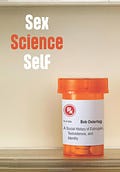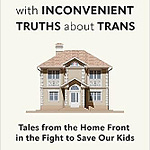In 2018, as I was beginning to research turning my New York Times op-ed into a book, a friend told me she had a must-read book for me: Robert Ostertag’s Sex, Science, Self: a Social History of Estrogen, Testosterone and Identity. It influenced me perhaps more than anything else I read about gender—although for several years I was too afraid to share some of what I’d learned in it.
Sex, Science, Self is about the history of ideas—ideas about masculine and feminine, male and female, and whether those can be contained in chemicals synthesized within, and eventually without, the body. And it was about what happens when those ideas mesh with capitalism, politics and identity. I interviewed Bob for my book, but Bob was kind enough to agree to an audio interview, all these years later, because the landscape and discussion (or debate, or war) has changed so much in the last couple of years since both of us wrote our books. I want as many people as possible to read Bob’s book and understand the history of these chemicals and the synthetic versions of them, as well as the story of the people who promoted them.
Here, Bob and I talk about where beliefs about gender, chemicals, and technology come from; the checkered past of doctors pushing hormones as miracle cures for many things other than gender dysphoria; and the early history of homophobia in trans activism.
Bio: Bob Ostertag has published more than twenty albums of music, six books, and a feature film. His writings on contemporary politics have been published on every continent and in many languages, beginning with his work as a journalist covering the civil war in El Salvador in the 1980s. His books cover a wide range of topics, from labor unions to migration to estrogen and testosterone. He has performed at music, film, and multimedia festivals around the globe. His musical collaborators include the Kronos Quartet, postmodernist John Zorn, heavy metal star Mike Patton, transgender cabaret icon Justin Vivian Bond, DJ Rrose, and many others. He currently hosts two podcasts, one of queer oral history and another on poverty in America.

















Everyone Should Read Bob Ostertag's Book